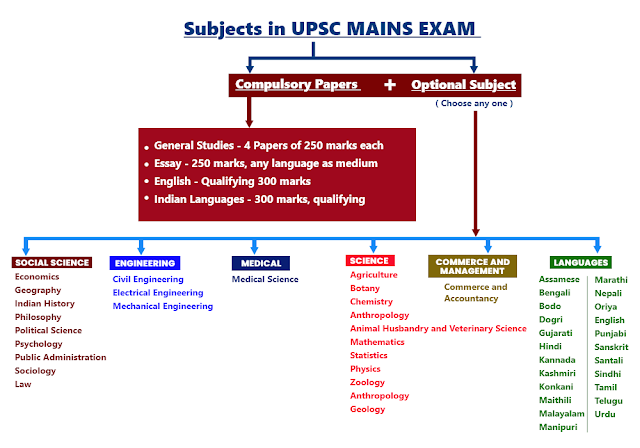Welcome to KNOWLEDGE OF WORLD! Here, you will locate the total UPSC schedule for the Civil Services Examination directed by the Union Public Service Commission (UPSC). The Civil Services Examination is broadly considered as one of the hardest and the most lofty assessments led in India.
To comprehend the UPSC test, one needs to comprehend the IAS prospectus. This takes out inefficient endeavors like perusing superfluous themes prompting lost time and keeps one carefully adjusted to the desires for the UPSC from the very first moment. The IAS schedule 2019 can be found at the UPSC official site or look down to download the UPSC prospectus pdf for the two Prelims and Mains.
 |
| upsc sullabus |
There is a typical UPSC schedule design for administrations, for example, the Indian Administrative Service, Indian Foreign Service, Indian Police Service, Indian Revenue Service (Customs and Central Excise) to give some examples. In any case, various phases of the IAS test have various schedules. The UPSC Prelims schedule centers around general and cultural mindfulness which is tried by objective-type (MCQ) questions. The UPSC Mains prospectus is substantially more exhaustive as this stage includes nine hypothesis papers.
The Civil administrations test is led in three stages:
Stage 1: Civil Services (Preliminary) Examination (Objective Type)
Stage 2: Civil Services (Mains) Examination (Descriptive Type)
Stage 3: Personal Interview (Personality Test)
Check the UPSC Calendar 2020 at the connected article.
Stage 1: UPSC Prelims Exam
The Preliminary Examination is made out of two segments:
1) General Studies
Paper Subjects Total Marks Duration
I General Studies (GS) 200 2 hours (9:30 AM to 11:30 AM)
II CSAT 200 2 hours (2:30 PM to 4:30 PM)
Comprehensively, the Civil Services (Preliminary) Examination comprises of two papers of target type, every one of 200 imprints (henceforth totaling 400 imprints) and of two hours span. To fit the bill for the Civil Services Mains, an applicant must endeavor both the papers.
Further, the UPSC General Studies (GS) paper comprises of 100 questions, while the CSAT paper comprises of 80 questions. The two papers have negative imprints for wrong answers set apart to the tune of 1/third of the complete imprints alloted to that question.
To further show this, each accurately addressed GS question will be granted 2 imprints. In this way, 0.66 imprints would be deducted from the aggregate for each question that is wrongly stamped.
So also, in the CSAT paper, since we have 80 inquiries for 200 imprints, effectively responded to CSAT question would draw in 2.5 denotes each, while each wrongly stamped inquiry would pull in a punishment of 0.833 for each such off-base answer, which will be deducted from the aggregate.
Questions that are not endeavored won't draw in any negative imprints.
The two papers of the IAS prelims are talked about in detail underneath:
General Studies (Generally directed between 9:30 AM to 11:30 AM)
The General Studies test is the main paper of the fundamental assessment. This test is proposed to test the general attention to a competitor in a wide scope of subjects that include: Indian Polity, Geography, History, Indian Economy, Science and Technology, Environment and Ecology, International Relations and related UPSC current issues.
Common Services Aptitude Test (CSAT) (Generally led between 2:30 PM to 04:30 PM)
This UPSC Prelims schedule for CSAT means to evaluate the inclination of the applicant in tackling 'Thinking and Analytical' questions, aside from 'Understanding Comprehension' and the sometimes asked 'Basic leadership' questions.
The 'Basic leadership' based inquiries are commonly absolved from negative imprints.
The primer assessment is intended for screening a contender for the consequent phases of the test.
The imprints got in the Prelims won't be included while landing at the last position list.
Schedule for GS Paper (Prelims Paper I)
Recent developments of national and universal significance.
History of India and Indian National Movement.
Indian and World Geography-Physical, Social, Economic Geography of India and the World.
Indian Polity and Governance – Constitution, Political System, Panchayati Raj, Public Policy, Rights Issues, and so on.
Financial and Social Development – Sustainable Development, Poverty, Inclusion, Demographics, Social Sector activities, and so forth.
General issues on Environmental Ecology, Biodiversity and Climate Change – that don't require subject specialization General Science
Schedule for CSAT Paper (Prelims Paper II)
Appreciation
Relational abilities including relational abilities
Consistent thinking and expository capacity
Basic leadership and critical thinking
General mental capacity
Essential numeracy (numbers and their relations, requests of extent, and so on.) (Class X level), Data elucidation (diagrams, charts, tables, information adequacy and so forth – Class X level)
Stage 2: UPSC Mains Exam (1750 Marks)
The Mains assessment comprises the second period of the Civil Services Examination. Simply after effectively qualifying in the prelims test would the applicants be permitted to compose the IAS Mains.
The Mains test tests the up-and-comer's scholarly ability inside and out and his/her capacity to introduce his/her comprehension as indicated by the prerequisites of the inquiry in a period bound way.
The UPSC Mains test comprises of 9 papers, out of which two are qualifying papers of 300 denotes each.
The two passing papers are:
Any Indian Language
English Language Paper
The papers on Essay, General Studies and Optional Subject of just such applicants who achieve 25% checks in both the language papers as a base passing standard in these passing papers, will be taken discernment of, for assessment.
In the event that a competitor doesn't qualify in these language papers, at that point the imprints got by such applicants won't be considered or tallied.
Structure of the language papers:
The sorts of inquiries posed are –
Article – 100 imprints
Understanding cognizance – 60 marks
Abstract Writing – 60 marks
Interpretation:
English to obligatory language (for example Hindi) – 20 marks
Mandatory language to English – 20 marks
Sentence structure and essential language use – 40 imprints
The remainder of the seven papers can be written in any of the dialects referenced under the Eighth Schedule of the Constitution of India or in English.
UPSC Mains Syllabus
Paper Subject Marks
Paper – I Essay (can be written in the mode of the up-and-comer's choice) 250
Paper – II General Studies – I (Indian Heritage and Culture, History and Geography of the World and Society) 250
Paper – III General Studies – II (Governance, Constitution, Polity, Social Justice and International Relations) 250
Paper – IV General Studies – III (Technology, Economic Development, Biodiversity, Security and Disaster Management) 250
Paper – V General Studies – IV (Ethics, Integrity and Aptitude) 250
Paper – VI Optional Subject – Paper I 250
Paper – VII Optional Subject – Paper II 250
Stage 3: IAS Interview/UPSC Personality Test (275 Marks)
Applicants who qualify the UPSC Mains Exam will be required the 'Character Test/Interview'. These competitors will be met by a Board selected by the UPSC.
The target of the meeting is to evaluate the individual appropriateness of the contender for a profession in the common administrations by a leading body of skillful and fair eyewitnesses.
The meeting is a greater amount of purposive discussion expected to investigate the psychological characteristics and scientific capacity of the competitor.
The Interview test will be of 275 imprints and the all out imprints for composed assessment is 1750. This summarizes to a Grand Total of 2025 Marks dependent on which the last legitimacy rundown will be readied.


0 comments:
Post a Comment